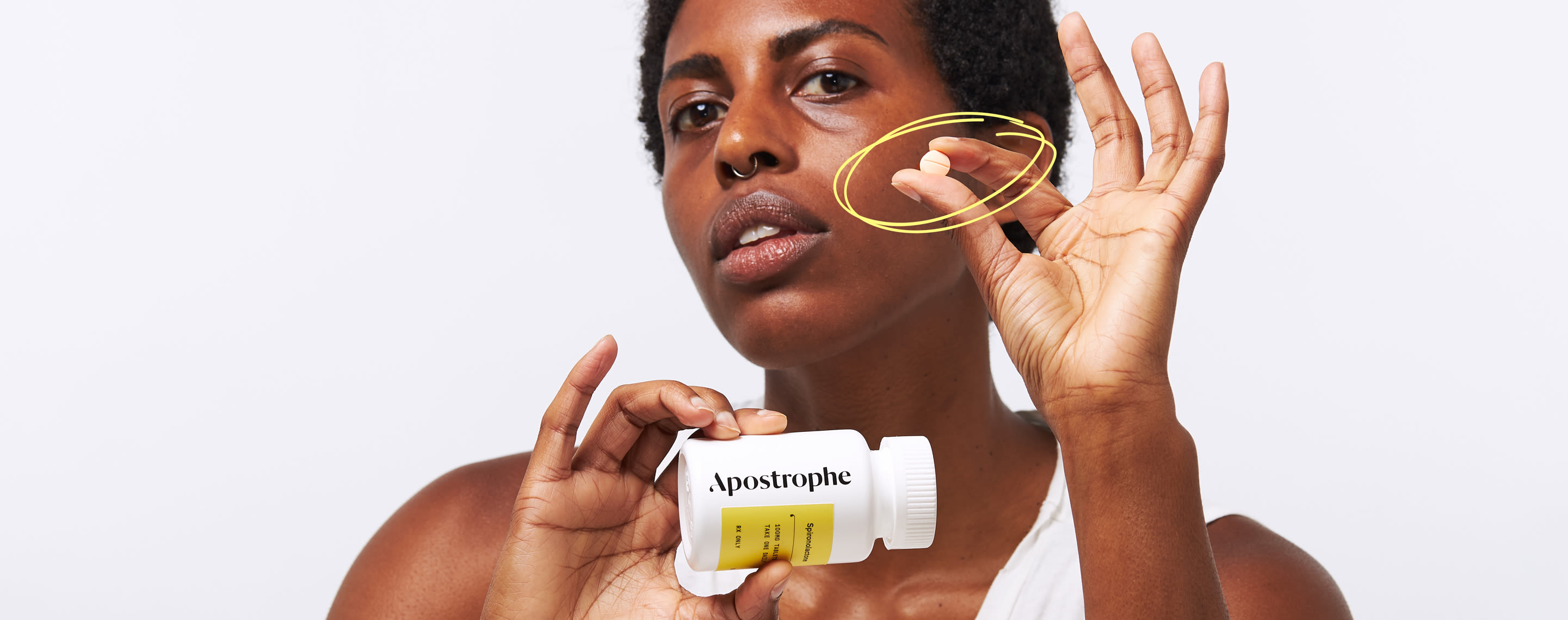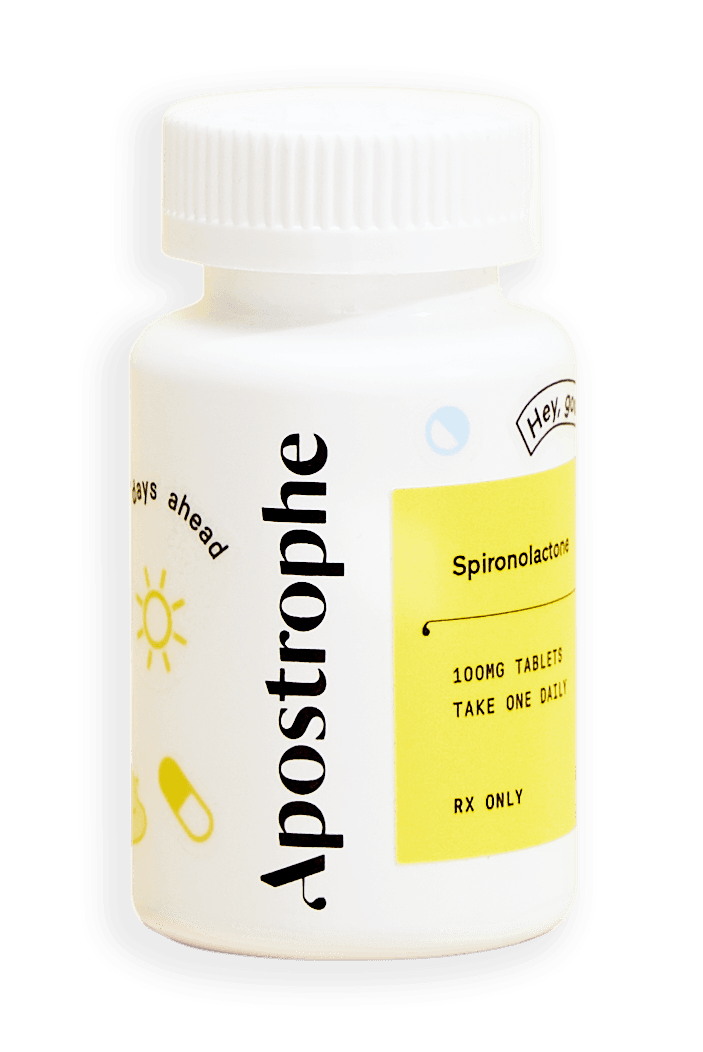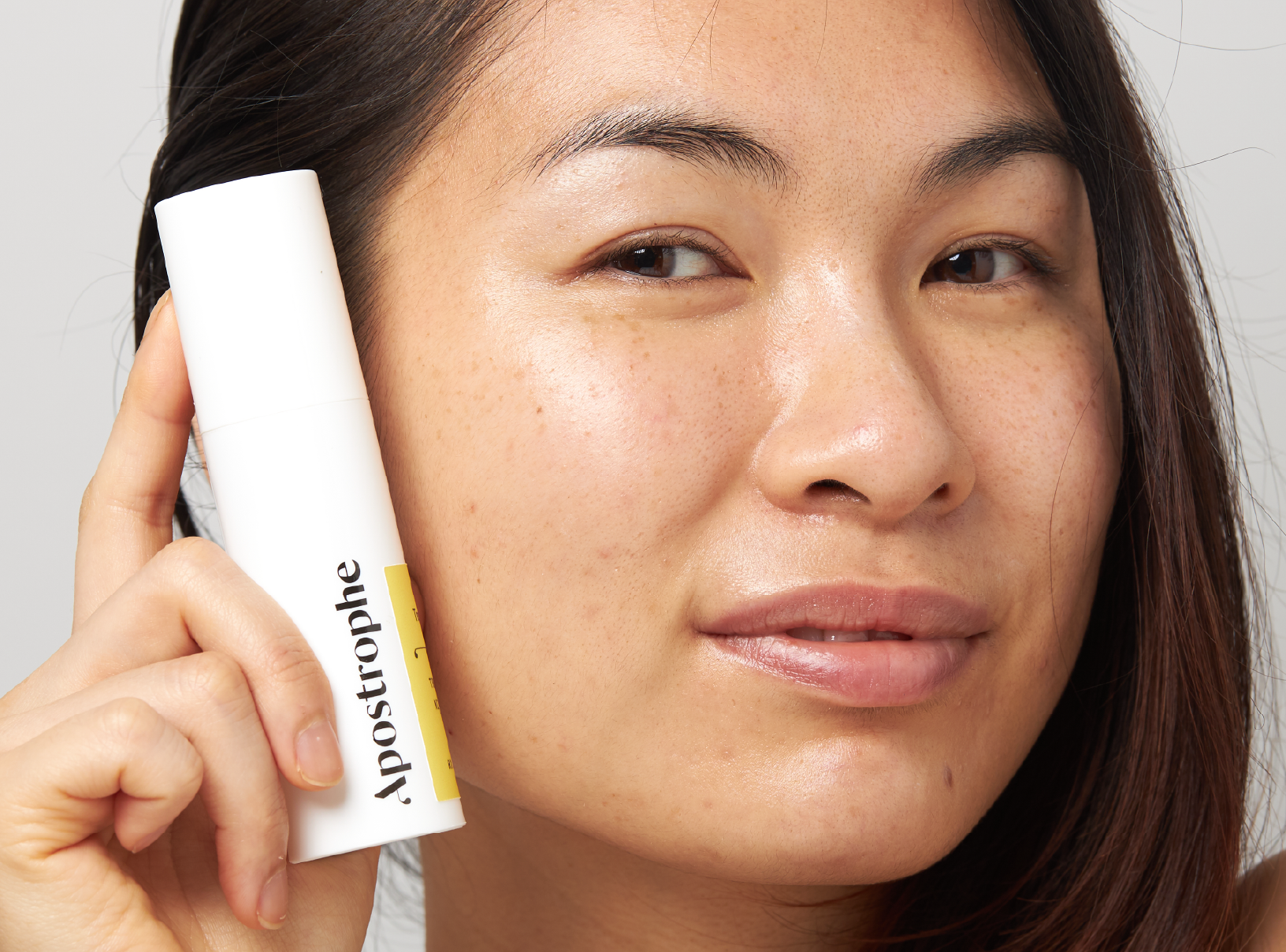Education
Here's Everything You Need to Know About Spironolactone


SHARE
Education
Here's Everything You Need to Know About Spironolactone
Medically reviewed by Aimee Paik, MD
Written by Daley Quinn
Last updated 4/5/2022
When it comes to battling hormonal acne, believe me when I say I’ve been there. I’ve shot out of bed in the morning, headed straight to the mirror, and inspected my chin to see if any of my painful, cystic pimples have gone down (or fingers crossed, disappeared). I’ve taken my foundation everywhere I go, in case I need to touch up a caking spot on my face midday. I’ve gone down the path of vitamin supplements and acne-fighting foods in an attempt to heal my hormones naturally. I’ve been there, and I know how debilitating hormonal acne can be in your everyday life.
If you feel like you’ve tried every acne-fighting topical to try and treat those painful, inflamed pimples, it might be time to talk to your doctor about trying an oral medication called spironolactone. Previously used as a blood pressure medication, spironolactone is the latest treatment being used to balance hormones and calm inflammation without too many side effects.
Hormonal acne: what is it and why does it happen?
Unlike your typical whiteheads or blackheads, hormonal acne develops (usually around the jawline and chin) due to an imbalance of hormones in a woman’s body. More specifically, it’s an imbalance of a class of hormones called “androgens” (like testosterone, for example), which stimulates sebum production in your pores and can lead to painful, deep, red cystic bumps that develop under the skin. An imbalance in androgens can also prevent your skin cells from shedding properly—blocked pores and an increase in sebum will encourage Cutibacterium acnes, an acne-causing bacteria, to grow.
Spironolactone and acne: how does it work?
Spironolactone is a medication that’s been used to help women decrease testosterone levels and block androgen receptors, further decreasing excessive sebum production and decreasing acne-causing bacteria. While spironolactone is used now to treat hormonal acne, it wasn’t always the case. “Spironolactone is a diuretic that was originally used to treat high blood pressure,” explains Dr. Aimee Paik, a board-certified dermatologist and Medical Director of Apostrophe. As it turns out, “it’s not a great blood pressure medication, but it was found to have useful antiandrogenic effects, which we use to treat acne.”
Spironolactone side effects
Considering spironolactone is a diuretic, you can probably expect an increase in frequent urination while taking the medication. “Dehydration and lightheadedness can occur if one doesn’t drink enough fluids throughout the day to compensate,” explains Dr. Paik. “Breast tenderness and menstrual spotting can occur, especially at higher doses, and there is a possibility of birth defects if you become pregnant while taking this medication, so it’s important to avoid pregnancy.” Additionally, spironolactone can cause high potassium levels in those with predisposing risk factors, like older age or underlying kidney problems, but this is rarely an issue if you are young and otherwise healthy.
Spironolactone dosage for acne
There is no one dose fits all when it comes to taking spironolactone for your hormonal acne. The dose that’s prescribed is really a medical decision that’s made between you and your doctor, but doses to treat acne typically range from 25mg to 200mg per day.
Spironolactone and PCOS
Turns out, spironolactone can help women with PCOS who are trying to decrease their hormonal acne. Spironolactone “can help women with PCOS by working against the androgens (aka “male hormones”) that cause acne,” explains Dr. Paik. “The first-line treatment for PCOS is usually a birth control pill, but spironolactone is often added to help control acne.”
Spironolactone vs. birth control for acne
Although both birth control and spironolactone have been prescribed to help treat hormonal acne, each works in different ways, and one might be more beneficial than the other. To understand the difference, you must understand how each works. “Most birth control pills contain a combination of estrogen and progesterone, and they work by increasing the level of sex hormone-binding globulin, effectively decreasing available testosterone,” explains Dr. Paik. “The progesterone in birth control pills varies, and some progesterones can worsen acne while others are helpful. Drospirenone (the brand name is Yasmin) is the most helpful progesterone for acne—it has similar antiandrogenic effects as spironolactone.”
Therefore, birth control pills alone may not be enough to control acne, but combining it with spironolactone might be your ticket to clear skin. “Spironolactone can cause menstrual spotting at higher doses and may cause birth defects, but by taking a birth control pill with spironolactone, you can reduce the amount of spironolactone required, keep menstrual cycles regular and prevent pregnancy,” says Dr. Paik. Also, it’s important to note that spironolactone won’t affect the efficacy of your birth control pill, and it should not be taken while pregnant or trying to conceive.
Spironolactone is also a good option when you aren’t able to take hormonal birth control for medical reasons. “Some women cannot take hormonal birth control because of a history of migraines or smoking, which increases the risk of blood clots,” says Dr. Paik. “Hormonal birth control can also trigger melasma (dark brown patches on the face) or mood disorders, such as depression.” In these instances, some women may choose to use a non-hormonal form of birth control to prevent pregnancy and take spironolactone to treat hormonal acne.
Will acne come back if you stop taking spironolactone?
According to Dr. Paik, spironolactone is a medication that shouldn't be used alone to treat acne, but should instead be used in conjunction with topical treatments. “Ideally, if you stop spironolactone, the topical medications would be sufficient to control your acne,” says Dr. Paik. “But if you are using spironolactone alone and you stop taking it, your acne would likely come back within days to weeks—spironolactone has a half-life of 17 hours, and it is completely metabolized out of your system within a few weeks.”
How to get a spironolactone prescription
The only way to get a prescription for spironolactone for acne is through a medical provider—thankfully, Apostrophe works with doctors and providers in almost every state to help you get spironolactone online and get your skin clear and under control. All you have to do is create an account, fill out the intake survey, and a board-certified dermatologist will create a custom treatment plan for you and ship it directly to your door. It will be up to you and your doctor/provider to figure out if a spironolactone prescription is the next best step in your treatment plan to help clear your hormonal acne.
Shop this post

Oral Spironolactone
Like what you just read? Sign up for our email list to get the scoop on skincare science delivered straight to your inbox.

Education
What is milia?
What is milia? Today, we’re jumping into one type of bump that you may have heard about most commonly in infants — milia.
Read More
Education
Best moisturizer for acne-prone skin
If you have combination acne-prone skin, figuring out which moisturizer is best for your skin might be tough. In this guide, we break down the best moisturizer for combination, acne-prone skin.
Read More
Education
How to build a face care routine
As you get into skincare, it might seem overwhelming, especially trying to figure out the order you're supposed to apply products in. Below, we detail how to build a face care routine for your skin!
Read More
